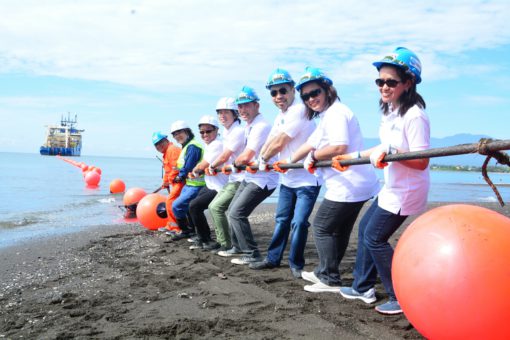
Cable landing
Globe Telecom successfully landed the Southeast Asia-United States (SEA-US) submarine cable system, bringing the company one step closer towards the provision of richer and enhanced international connectivity to businesses in Davao and the rest of the country.
“We are excited over this development since it won’t take long before we can finally address the rising demand for internet services from businesses in the Philippines,” said Mike Frausing, Globe Business Senior Advisor.
“The primary source of information now for many people is the internet so the city government of Davao is very happy with this development. This will definitely benefit Davao City, especially the service sector such as Business Process Outsourcing and Banking and Finance, as well as the whole Philippines.
The SEA-US cable was connected to the Globe cable landing station in Brgy. Talomo, Davao City which also houses the Power Feed Equipment necessary to run the system.
The SEA-US submarine cable system consortium in which Globe is a part of will link five areas and territories that include Manado (Indonesia), Davao (Philippines), Piti (Guam), Oahu (Hawaii, United States), and Los Angeles (California, United States).
At a project cost of around USD250 million, the 14,000-kilometer cable system will consist of two fiber pairs with an initial design capacity of 20 terabits per second and will use the latest in submarine fiber-optic technology with 100 gigabits per second transmission equipment per pair.
Aside from forming part of the SEA-US consortium, Globe is also a member of an international consortium of telecommunications and technology companies operating the Southeast Asia-Japan Cable (SJC) system. SJC is an 8,900-kilometer cable system linking seven territories that include Brunei, mainland China, Hong Kong, Japan, Singapore, and the Philippines, including the option to link with Thailand.
Globe Telecom has also made investments in the East Asia Cable system (EAC), Asia Pacific Cable Network-2 (APCN2), Tata Global Network–Intra Asia cable system (TGN-IA), the City to City cable system (C2C), and is interconnected with major Trans-Pacific Cable systems that encompass the Unity, Tata Global Network-Pacific, (TGN-P) and the Japan-US Cable Network (J-US).



